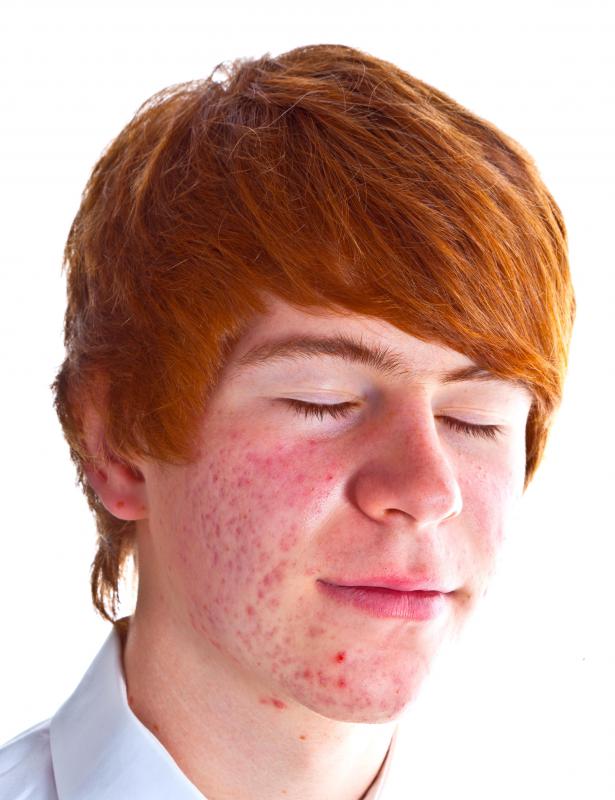At TheHealthBoard, we're committed to delivering accurate, trustworthy information. Our expert-authored content is rigorously fact-checked and sourced from credible authorities. Discover how we uphold the highest standards in providing you with reliable knowledge.
What is Sebum?
Sebum is an oily substance secreted by the sebaceous glands in mammalian skin. Its main purpose is to make the skin and hair waterproof and to protect them from drying out. An excess of sebum, however, can make the skin or hair oily, and it can begin to smell when broken down by bacteria outside the body. The sebaceous glands are usually attached to hair follicles, but they also exist in some hairless areas of the human body, such as the eyelids, where they add sebum to tears to keep the eye moist.
Sebum, along with sloughed skin cells, makes up the waxy vernix caseosa that covers newborn babies. Without this coating, babies would come out of the womb very wrinkled from the watery environment in the womb. Sebaceous glands often go into overdrive during puberty, much to the chagrin of teenagers, as the excess sebum can cause oily skin, odors, and acne.

There are a number of disorders associated with sebum and the sebaceous glands. A blocked gland can result in a sebaceous cyst, which fills with sebum and can become infected. Sebaceous cysts usually require no treatment, but they may have to be removed through surgery if they become particularly large or painful. Sebaceous hyperplasia, a condition resembling acne that affects the middle-aged or elderly, is an enlargement of the sebaceous glands. Rarely, the sebaceous glands may develop a benign tumor or cancer.

The most common sebaceous disorders are acne and keratosis pilaris, which presents as tiny, hard bumps on the skin. A dermatologist can usually treat both conditions effectively with topical or oral treatments. Regularly exfoliating and moisturizing the skin can also be helpful.
Mites of the genus Demodex, sometimes called "eyelash mites," feed on sebum and often inhabit the sebaceous glands of humans and other animals. There are usually no associated symptoms, but Demodex infestation can cause itching, inflammation, or hair loss, a condition known as mange in animals. Adults are much more likely than children to carry Demodex mites, presumably because they produce much more sebum.
AS FEATURED ON:
AS FEATURED ON:















Discussion Comments
I have one sebaceous cyst on my jaw. I am able to empty it of sebum easily but it has a very strong smell.
To anon29238: Take the piercing out of your septum and you won't smell sebum. Why would you keep it in there?
The comments of the effects of skin piercings on producing unwanted sebum production are good warnings against getting skin piercings.
I have my septum pierced and the "sebum" smell is horrible. Since it's in my nose I can *always* smell it. It doesn't go away, and I clean it 3 times a day. It sucks.
"Sebum" is also the stuff that builds up on earrings when you gauge your ears...It stinks really bad by the way lol....My ear is gauged and i clean it regularly...i kind of like the smell lolll
Yes, sebum production does decrease with age, particularly in post-menopausal women.
eyelash mites?! that's not a good mental picture! does sebum production decrease with age?
Post your comments